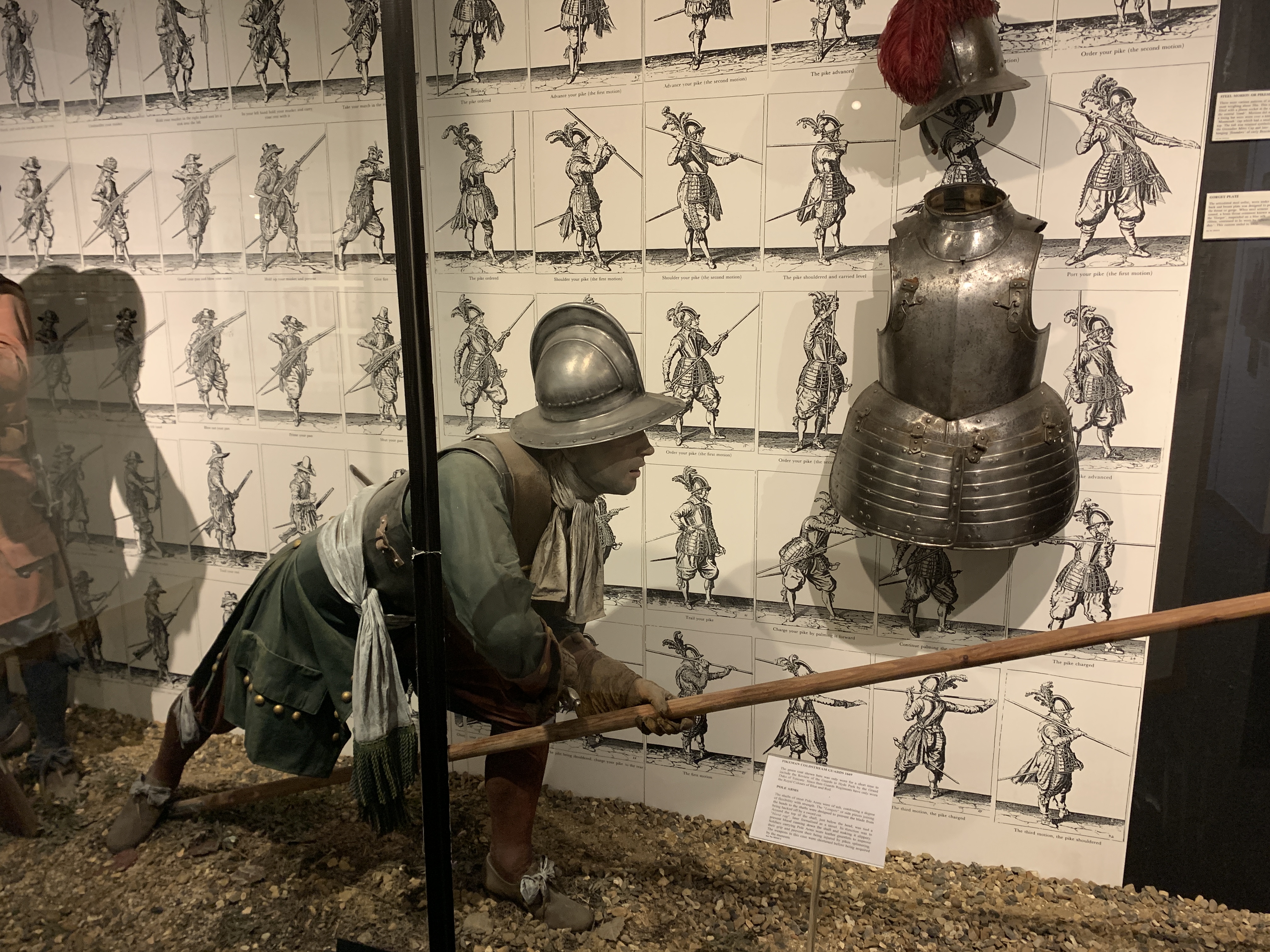
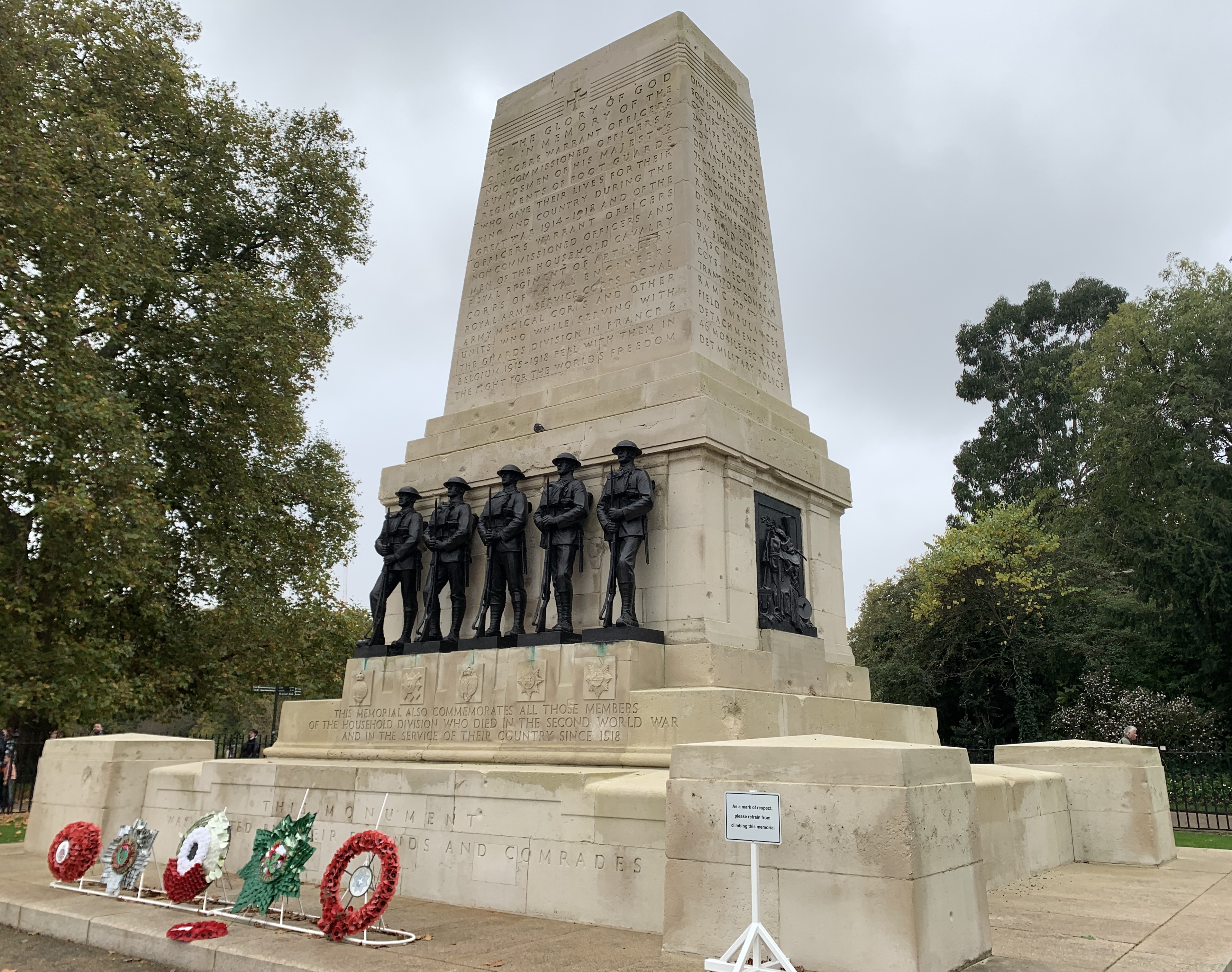
As described on its website, “The museum was originally founded as a teaching aid for new recruits to learn their Regimental heritage”, and that can be a challenge for military museums; translating what may be common knowledge for serving personnel into comprehensible arenas and narratives for a wider audience.
To welcome visitors to the museum – and the Guards – a fantastic six-minute introductory video sets the scene, recounting the history of the regiments. We may all be familiar with the Guards’ red-tunics and bearskin headgear, but did you know each regiment has a unique uniform?
Grenadier Guards (formed in 1656)
Tunic buttons – Single buttons
Collar badge – Grenade
Shoulder badge – Royal Cypher
Bearskin plume – White (left side)
Coldstream Guards (formed in 1650)
Tunic buttons – Grouped in pairs
Collar badge – Garter Star
Shoulder badge – Rose
Bearskin plume – Red (right side)
Scots Guards (formed in 1662)
Tunic buttons – Grouped in threes
Collar badge – Star, Order of the Thistle
Shoulder badge – Thistle
Bearskin plume – None
Irish Guards (formed in 1900)
Tunic buttons – Grouped in fours
Collar badge – Shamrock
Shoulder badge – Star, Order of St Patrick
Bearskin plume – Blue (right side)
Welsh Guards (formed in 1915)
Tunic buttons – Grouped in fives
Collar badge – Leek
Shoulder badge – Leek
Bearskin plume – White and green (left side)
Audio guides in half a dozen languages direct visitors around the museum, detailing almost 370 years of Guards history. The lineage of the three oldest regiments date back to the mid-1600s and they have always performed two roles: both as frontline fighting units and as the ceremonial bodyguards of the monarch and their residences.

Disputes with Parliament before the English Civil War (1642-51) meant King Charles I could not raise an English regiment to fight in Ireland and so he had the 1st Marquis of Argyll raise a Scottish regiment, which became the 3rd Regiment of Foot Guards, or Scots Guards after the war. Meanwhile, during the Civil War, Oliver Cromwell’s New Model Army included Monck’s Regiment of Foot, which went on to become the Coldstream Guards. After the war, King Charles II’s personal bodyguard was raised as the Royal Regiment of Guards before becoming the Grenadier Guards.
Those original Guards regiments have fought in every British conflict, either providing fighting units or seconded officers. The museum guides visitors through familiar wars and battles including the Napoleonic Wars, Victoria’s imperial wars of the Nineteenth Century, the Boer War, the Great War, the Second World War, the Cold War and up to the challenges of modern day asymmetric warfare.
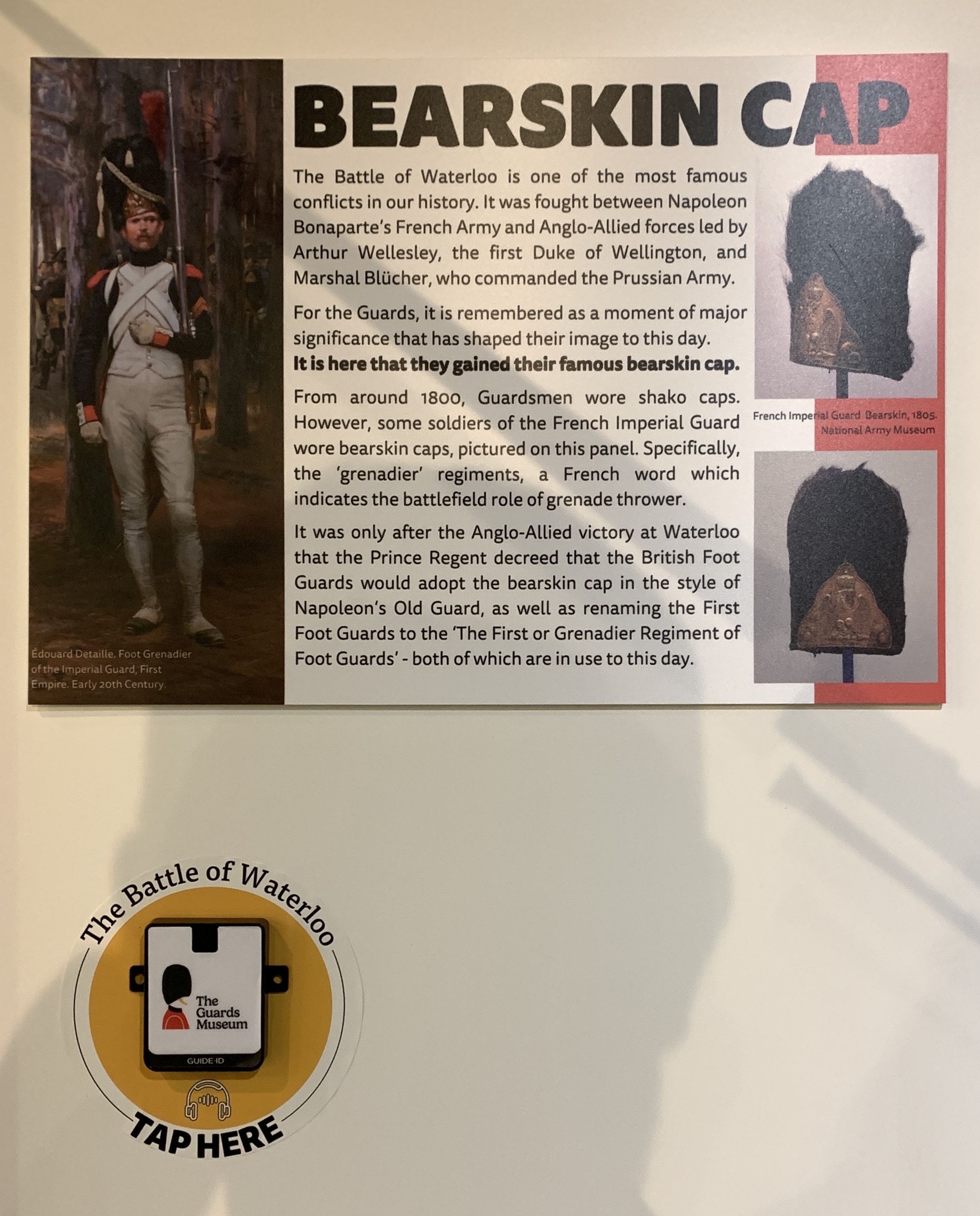
In recognition of Irish regiments’ actions in the Second Boer War, in April 1900 Queen Victoria announced the creation of a regiment of Irish Guards. As the fourth most senior regiment, their tunic buttons are arranged in groups of four and they wear the blue plume of St Patrick. During the Great War, King George V addressed the omission of a senior Welsh regiment of foot by forming the Welsh Guards in February 1915. Being fifth in seniority, they wear their tunic buttons in groups or five, and display a white-green-white plume on their bearskins.
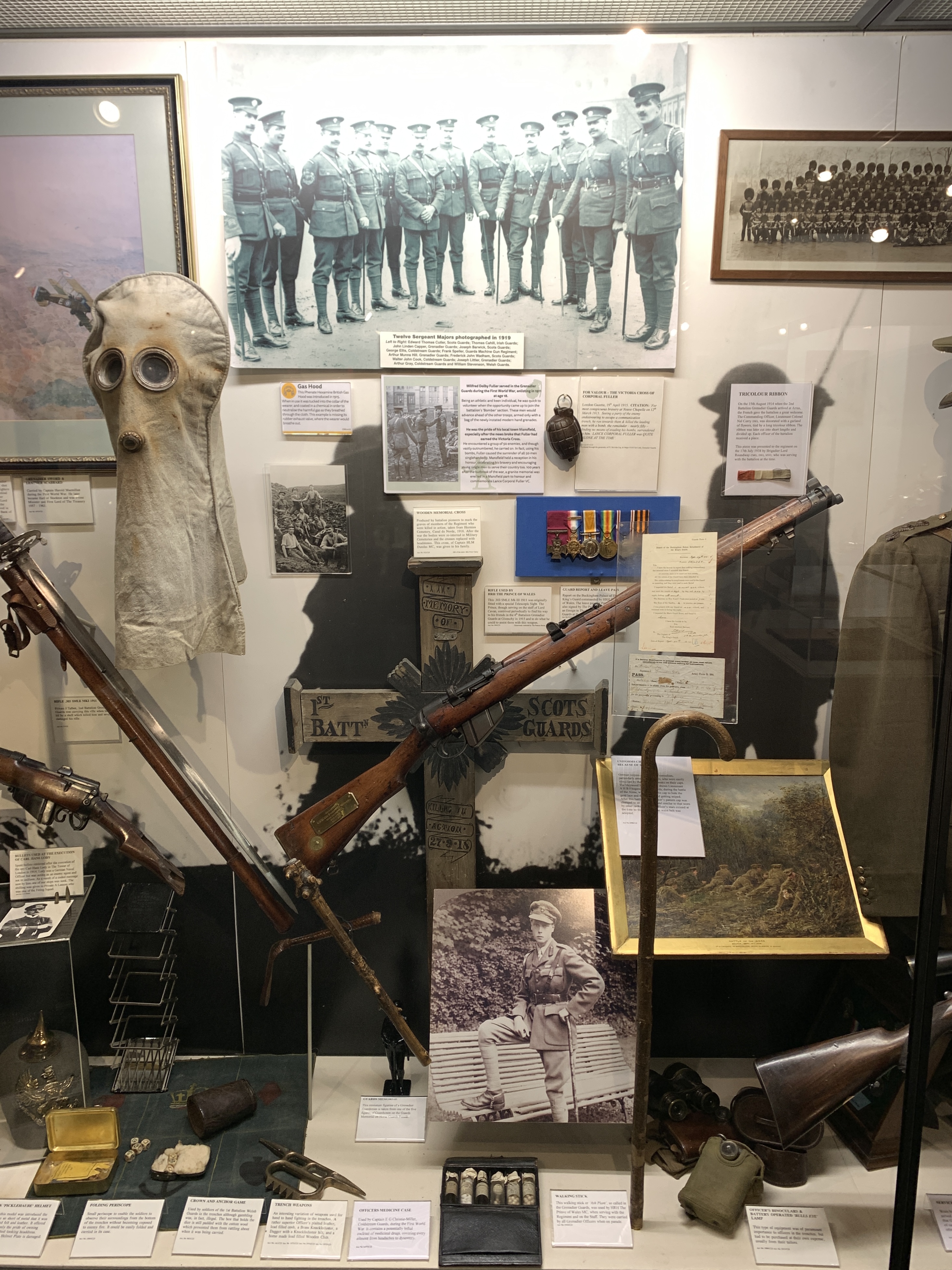
The Guards Museum displays a board commemorating Victoria Crosses awarded to Guardsmen since the first VCs of the Crimean War (1854-56). The museum’s collection also contains an example of the very first military campaign medal open to all ranks: the Dunbar Medal. The decoration was awarded to officers and soldiers – gold versions for the former and silver for the latter – that fought in Cromwell’s army at the Battle of Dunbar in September 1650.
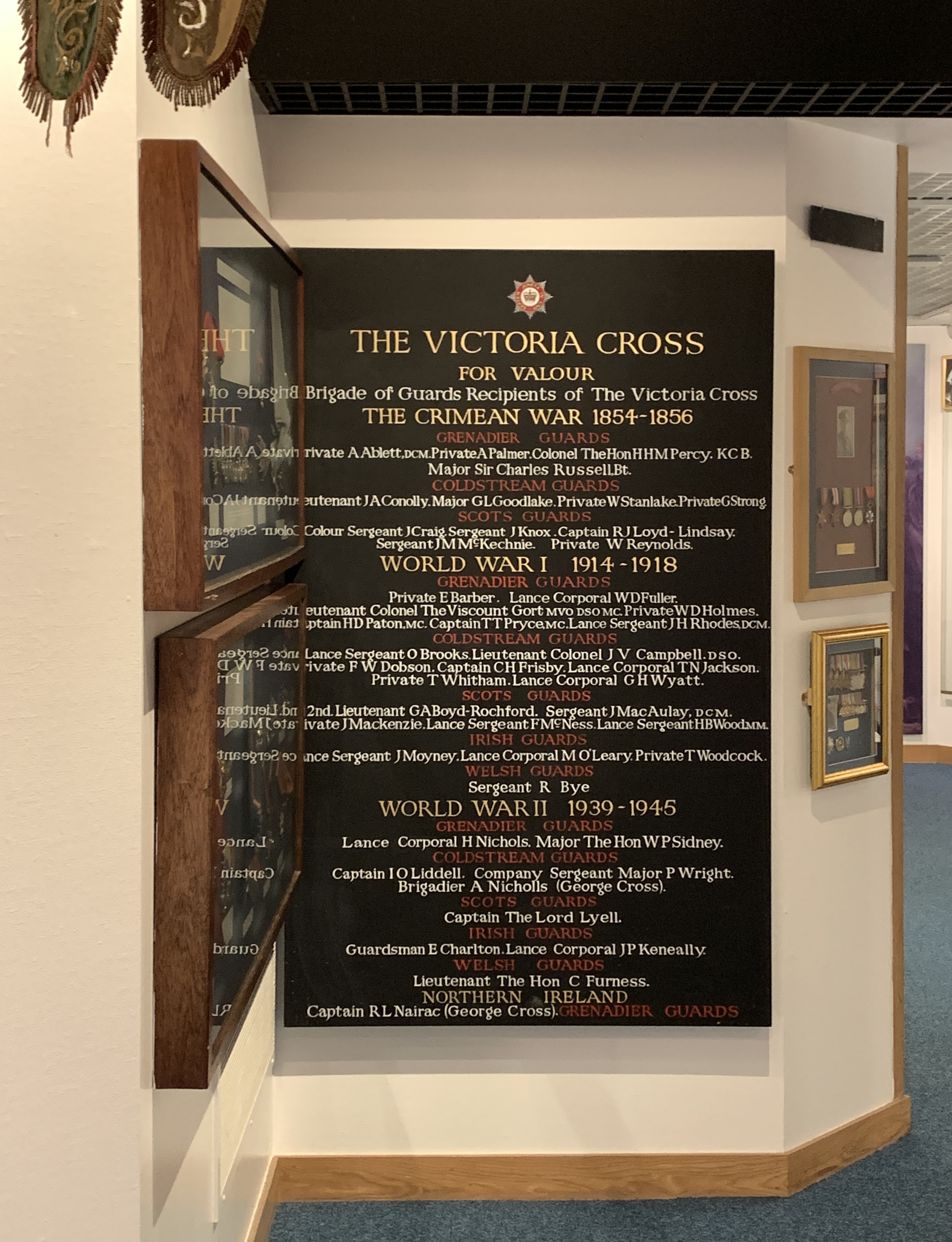
Today, beyond their combat and ceremonial roles, the Guards perform peacekeeping and training duties for British, United Nations and NATO operations around the world. They also remain an instantly recognisable element of public celebrations such as Queen Elizabeth II’s Platinum Jubilee, the coronation of King Charles III and the annual Trooping the Colour.
In all, an attentive visitor will spend up to two hours in the museum and the Guards Division War Memorial is just a short walk away opposite Horse Guards Parade.
The Guards Museum
Address – Wellington Barracks, Birdcage Walk, London, SW1E 6HQ, UK
Website – https://theguardsmuseum.com/
Opening times – 10am-4pm every day
Prices – Adults £10; Children (aged 0-15) free
Various concessions are available
* * *

David developed an interest in military history in his teens, which led him naturally to War Studies at King’s College, London. His professional life involves delivering data and marketing consultancy across the education sector, and beyond that he was Marketing Officer for the Salisbury Military History Society for five years and has provided support to a range of heritage institutions including the Rifles (Berkshire & Wiltshire) Museum, Royal Artillery Museum and Army Flying Museum. He enjoys exploring new ways to tell stories and engage with audiences.
DCS Heritage on Twitter/X
Salisbury Military History Society
The Rifles (Berkshire & Wiltshire) Museum
Royal Artillery Museum
Army Flying Museum